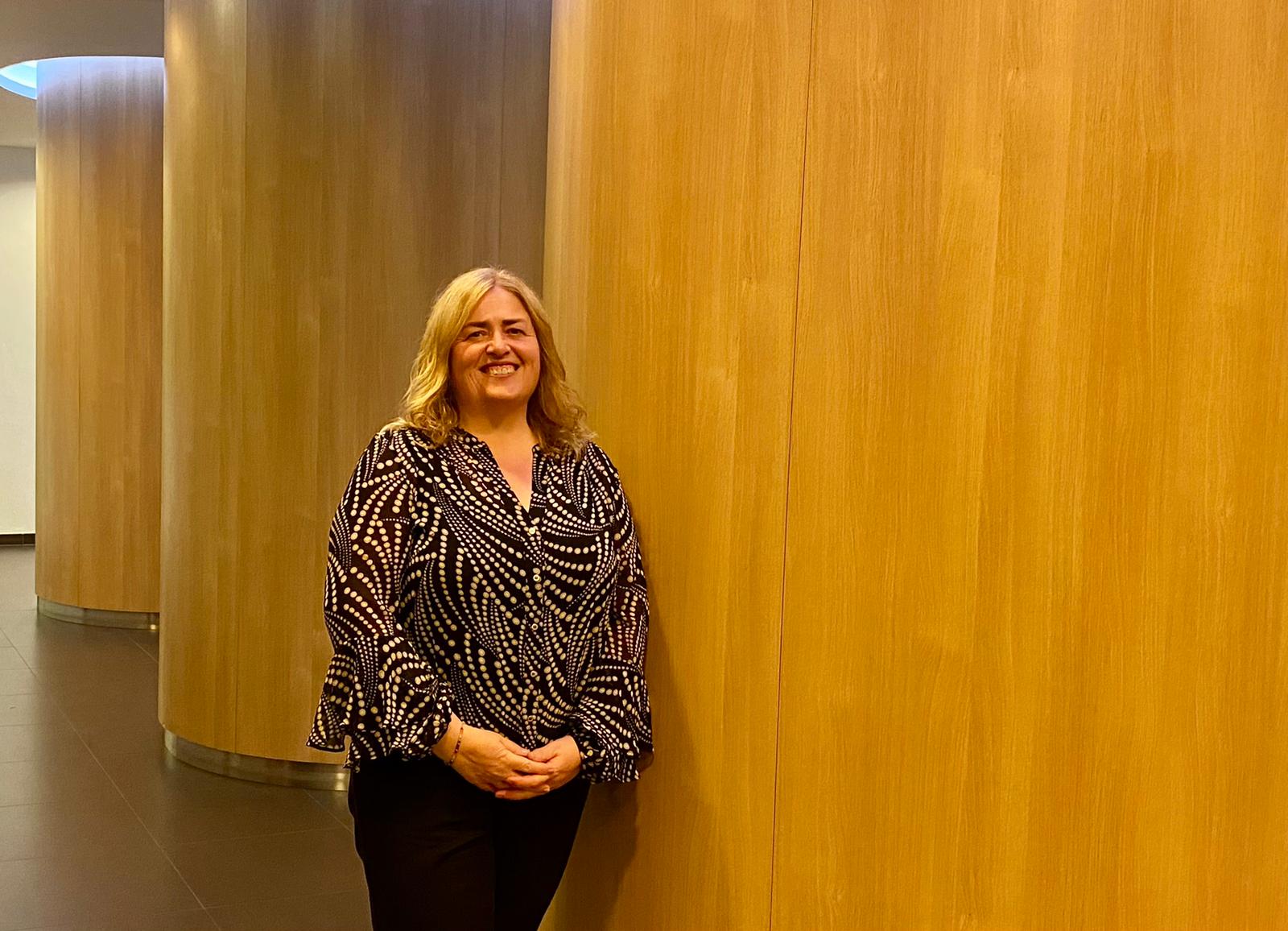A child with a life-limiting condition has a significant impact on the whole family. A key worker, as the role is called, can provide support during the challenging time of moving from children’s to adult services. They can support the young adult and their family to navigate this challenging situation. „In Northern Ireland, specifically, the position is often held by a nurse,“ says Helen Kerr, herself a nurse and a highly respected professional with more than 20 years of experience in palliative care. She recently gave a lecture to Czech professionals as part of the XIII. National Conference on Children’s Palliative Care in Ostrava. The Vlček Family Foundation was a partner in supporting this presentation and took the opportunity to talk to Helen Kerr at the conference. Her main topic of interest is the transition from childhood to adulthood. This is an extremely challenging period, because at the end of childhood, the child with a life-limiting condition and their family loses a key worker as well as other professionals they have been used to for years.
In the lives of young patients, crossing the border from childhood to early adulthood is a very important time. This transition is your main focus. How do you handle this period of a patient’s life in terms of general practitioners?
Health and social care services are divided into services for children and services for adults in Northern Ireland with one exception, the General Practitioner (GP). They provide care over the lifespan of individuals. With the exception of the GP, when patients are 18 years old, they have to leave children’s services, all the resources and relationships they have established, and move into adult services. This results in having to develop new relationships with health and social care providers in adult services. Funding streams and how services are organized are different in adult services, which may mean that some services children had may no longer be available to them. It can be a very uncertain and anxious time for children, young adults and their parents.
What are the most important factors helping people to manage this transition?
There are a range of interventions associated with a good transition. It is important to start the planning early. There are some recommendations saying it should start at 14 years of age at the latest. Children’s healthcare professionals should contact relevant adult service providers many years in advance of the young adult transferring to adult services to provide them with time to assess and prepare their environment. Over this period, health and social care services also need to acquaint the young adult with all the differences between children’s and adult services. Some of these young adults have very complex medical conditions that require a range of services, such as medical and nursing care, occupational therapy, physiotherapy, social worker involvement, and others. There are reports from young adults who say they feel they have fallen off a cliff edge due to the challenges they experience when leaving children’s services and moving to adult services, highlighting that this process is not always effective. There can be a gap between children’s and adult services where there is a lack of continuity of care, one reason being that adult service providers are not being contacted well enough in advance or they do not engage. Although there is some evidence on the interventions associated with a successful transition to adult services, there is still little evaluation completed to determine whether these interventions are successful, and more research is required to test these interventions.
What is the role and the benefit of the key workers?
They have a key role in supporting the young adult with a life-limiting condition and their families. Young adults and their families report that they value the relationship with the key worker, as it provides continuity. Over time, a trusting relationship is established with the child and the family. Key workers are a point of contact for questions and support in resolving issues contacting relevant people. It is a person they can contact, if they have any questions, including questions about the transition from children’s to adult services.
What is the usual background of the key worker and how many patients do they have?
A key worker is usually a nurse because a nurse often has the closest contact with the patient and their family. It is often a community children’s specialist palliative care nurse from a children’s hospice, however, in some countries, depending on the child’s needs, it could be a different healthcare professional, such as an occupational therapist or physiotherapist.
Does the key worker stay with the child when he or she becomes an adult?
As health and social care services are divided into children’s and adult services, the key worker allocated to the child when in children’s services will be changed when the young adult moves to adult services. This can be very difficult for the young adult and their family, in that they lose the long established trusting relationships with many individuals including the key worker. Based on my research, young adults and their families have reported being saddened by the loss of the relationships they have established with health and social care providers while in children’s services. In addition to the key worker, young adults with life-limiting conditions can have many different professionals who provide care and support over many years. They report they can find it very difficult to start over again with new professionals when they move to adult services.
Is there a key worker for adults?
The key worker allocated while in children’s services changes when the young adult moves to adult services. In addition to the challenges young adults and their families experience when moving on from the long standing relationships they have established with children’s services providers, they also report other drawbacks – for example, the unavailability of some services such as respite care.
So, it is definitely a difficult time for patients. What can be done to improve it?
There are nine interventions associated with a good transition for young adults with life-limiting conditions. This is based on a realist review of the literature, an all-Ireland research study, and an international collaborative research study with Toronto, Canada. These interventions are suggested to be transferable to other populations and contexts, including the Czech Republic.
The key factors for a successful transition from children to young adults:
1/ Effective communication and thorough cooperation between children’s and adult services
2/ Engagement of a transition coordinator
3/ Interdisciplinary and interagency joint working
4/ Person-centred approach to care being demonstrated by service providers
5/ Involvement of parents/carers
6/ Early start of the transition process
7/ Developing the young adults’ autonomy throughout the transition process
8/ Helping young adults orient themselves in adult services.
9/ Effective communication between service providers and the adolescent/young adult and their parents/carers.
HELEN KERR is a registered Specialist Nurse in oncology with the Nursing and Midwifery Council with previous clinical experience in oncology and palliative care. Her health services research involves interventions to improve services for young adults with life-limiting conditions. Previous realistic evaluation research identified the factors associated with a successful transition from children’s to adult services. She was awarded the International Journal of Palliative Nursing Researcher of the Year award in 2017 and was the runner up in the Royal College of Nursing, Northern Ireland Nurse Researcher of the Year in 2016. Helen´s educational research focuses on introducing and evaluating innovative pedagogical digital approaches, such as virtual reality methodology and mobile spaced learning into the nursing curriculum.




